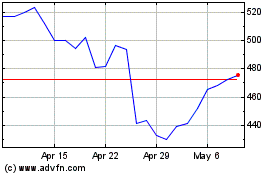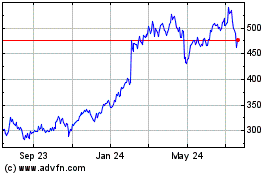By Felicia Schwartz
WASHINGTON -- The Obama administration, which has struggled for
years to combat the social-media lure of Islamic State, is
experimenting with new ways to put its online anti-extremism
messages in front of would-be terrorist fighters overseas.
A revamped media effort is making use of targeted advertising,
to put video messages on Facebook to reach the young men and women
who have given digital hints that they could be thinking of
traveling to Syria or Iraq to join extremist movements.
The campaign -- which is being run by the Global Engagement
Center, a multiagency initiative housed at the State Department --
is seen by U.S. officials as one of the most promising new
initiatives aimed at reaching and dissuading would-be fighters,
though many acknowledge that messaging has always been a tough
effort for the U.S. government and one whose true outcomes are
impossible to know.
"This isn't easy work," said Michael Lumpkin, who earlier this
year left his post as assistant secretary of defense for special
operations to run Global Engagement Center. "There clearly is no
silver bullet as we move forward."
But early results have been encouraging. The center spent
$15,000 on a pilot four-week Facebook advertising campaign that
targeted 13- to 34-year-old unmarried men and women in Morocco,
Tunisia and Saudi Arabia and who expressed an interest in Iraq or
Syria or Islamic State-related topics, as indicated by their
Facebook activity. The pilot campaign, which ended Oct. 1, reached
6.9 million people and generated 781,000 visits to external
sites.
Different phases of the campaign included varied content and
redirected viewers to different sites, allowing officials to judge
which types of ads had the best results.
The most successful part of the pilot made use of a native video
ad, which blends in with a site's editorial look and feel. The
video ran on Facebook for a week and reached 2.4 million people who
watched for a total of more than 1,050,913 minutes, or two years'
worth of streaming.
The pilot campaign marked the first time that the U.S.
government has turned to targeted ads as part of its effort to
disrupt Islamic State recruitment. With the pilot complete,
officials are turning to a broader $50,000 campaign in 12
countries, including Egypt, Indonesia and France.
The results compared favorably with nongovernmental campaigns. A
pilot earlier this year by Google's Jigsaw, formerly known as
Google Ideas, placed advertising alongside results of searches for
keywords and phrases entered by users with an interest in Islamic
State. The ads linked to Arabic- and English-language YouTube
channels with videos intended to dissuade would-be fighters by
featuring Islamic State defectors and other themes. More than
300,000 people were drawn to anti-Islamic State YouTube channels
over two months, according to Google.
The ad featured in the one-week U.S. campaign was about two
minutes long and used a cartoon portraying a man messaging with an
Islamic State recruiter. The recruiter encourages him to go to
Syria to fight. The man asks questions about Islamic State: Is it
true that the group kills Muslims, and takes women as slaves? The
faceless recruiter offers defenses to each question, urging the man
to "trust us."
Ultimately, the man concludes that joining Islamic State
wouldn't meet his expectations and decides against it.
The Global Engagement Center's campaign aim is to get
focus-group-tested content in front of the right people, in hopes
of planting seeds of doubt as they consider whether to join Islamic
State.
"We're shifting from what I call meat-cleaver messaging," Mr.
Lumpkin said. "We're focused more on what I call scalpel messaging
-- highly precisioned toward targeted audiences."
Center officials acknowledge they can't directly measure how
many people they've persuaded not to join terrorist organizations.
But an analytics team led by two former National Security Agency
scientists who recently joined the center, Nash Borges and Paul
DiOrio, is assessing statistics to determine how effective the
campaigns are. For example, they are examining how long people
engage with the content and whether they fill out surveys when
prompted.
One big challenge is keeping the U.S. sponsorship from eroding
viewer confidence in the campaign. There is no U.S. branding on the
videos themselves, but they are currently being pushed out on
Facebook through the U.S. Digital Outreach Team, which is a State
Department-run Facebook page. So a person who sees the video in his
or her feed would see a small U.S. government logo identifying the
publisher.
Ali Soufan, a former Federal Bureau of Investigation agent who
worked on high-profile terrorism cases, said he worried that the
visibility of the U.S. involvement in the campaign could set it
back.
"They are doing a great job. However, among the targeted
communities, the U.S. government is not a credible messenger," he
said.
The fresh push to reach would-be foreign fighters comes as
Islamic State's overall media output has plummeted, according to a
study from the Combating Terrorism Center at West Point.
It also comes amid a decline in the number of foreign fighters
attempting to reach Iraq and Syria. U.S. officials and experts
attribute this decline largely to Islamic State's changing fortunes
on the battlefield.
Despite the promising initial results, some terrorism experts
and former officials questioned how meaningful the new effort
is.
Will McCants, a former State Department official who helped
launch the original version of the center, the Center for Strategic
Counterterrorism Communications, and is now at the Brookings
Institution, said academic research shows that recruitment is
driven primarily by politics and identity.
"Nobody wants to cop to the fact that [messaging is] pretty
tangential from stopping fighters from carrying out attacks," he
said. "It probably helps at the margins."
Write to Felicia Schwartz at Felicia.Schwartz@wsj.com
(END) Dow Jones Newswires
October 20, 2016 10:35 ET (14:35 GMT)
Copyright (c) 2016 Dow Jones & Company, Inc.
Meta Platforms (NASDAQ:META)
Historical Stock Chart
From Aug 2024 to Sep 2024

Meta Platforms (NASDAQ:META)
Historical Stock Chart
From Sep 2023 to Sep 2024
